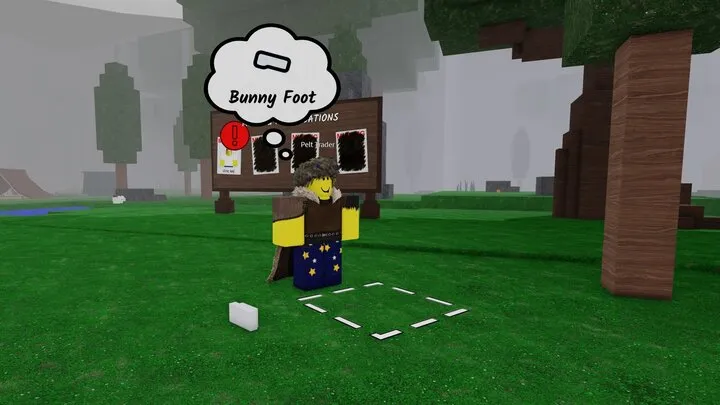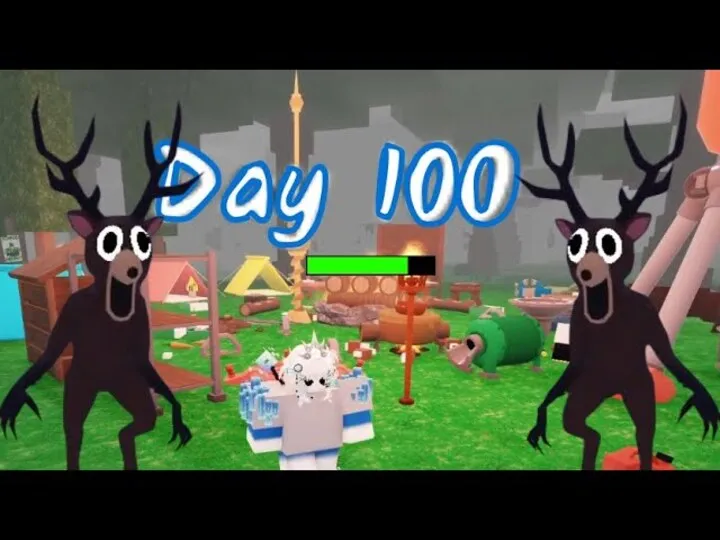99 Nights in the Forest is more than just a survival game—it is a psychological descent through fear, paranoia, and atmospheric tension. Players are not merely surviving hunger, thirst, and the elements; they are surviving the intangible weight of isolation, darkness, and the strange phenomena haunting the forest. This article explores the role of fear and atmosphere in shaping the entire experience of the game, structured across the flow of its 99-night timeline. By the end, it becomes clear that the true battle is not only against the creatures or the environment but also against the unseen psychological terror carefully woven into the game’s design.

Early Nights: The Uneasy Calm
In the first stretch of the game, the player is introduced to the forest with relative peace. The nights are quiet, and the player hears only the sounds of wind rustling through trees or animals scurrying in the distance. But even in this calm, fear begins to plant its seeds. The game leverages silence as its first tool of atmosphere, where the absence of immediate threat is more unnerving than safety itself.
Players often report that these early nights feel like a false sense of security—an intentional design to lull them before the storm. Subtle details, like distant branches snapping, create doubt and anticipation, training players to always listen, even when nothing is happening. This unease sets the tone for everything that follows.
The Soundscape of Fear
As nights progress, the sound design becomes one of the most important elements of fear. Low rumbles, dissonant notes, or sudden crescendos replace the silence. Instead of relying on jump scares, the game uses a layered soundscape to manipulate emotions.
The Role of Ambient Noise
- Wind patterns grow harsher and carry with them eerie tones.
- Animal cries change from natural to distorted, creating uncertainty about what is natural and what is not.
- Player’s heartbeat audio begins to sync with danger cues, making the game feel physically stressful.
This combination ensures that players never fully trust their surroundings. Even when nothing is present, the suggestion of something nearby keeps the player in a perpetual state of vigilance.
Visual Atmosphere: Darkness and Light
The forest’s visual design evolves with each passing set of nights. Early on, players rely on a campfire or torch to illuminate the darkness. But as time passes, the darkness itself seems to shift, growing denser and more suffocating.
The interplay between light and shadow becomes symbolic. Light is fragile, fleeting, and vulnerable, while darkness feels infinite and encroaching. Small visual changes—like moving shadows or glowing eyes in the distance—force players to question whether they are truly safe within their circle of light.

By the mid-game, the visual atmosphere begins to mirror the player’s psychological descent: less vibrant, more hostile, and filled with subtle distortions that create doubt about what is real.
The Psychology of Isolation
Isolation is another key layer of fear in 99 Nights in the Forest. While many survival games include cooperative mechanics or NPC allies, here the player is utterly alone. The forest becomes both enemy and companion.
Over dozens of nights, this solitude intensifies paranoia. Players second-guess their choices, imagining threats that may not exist. The design of isolation is deliberate: without anyone to confirm what is real, the player’s mind fills the silence with imagined dangers. It is this blend of environmental storytelling and psychological design that makes isolation a mechanic rather than just a narrative choice.
Mid-Night Terrors: Escalating Encounters
As the player progresses to the middle nights, the forest reveals more tangible threats. Strange figures appear in the distance, sounds grow more hostile, and shadows feel alive. These mid-game encounters represent the turning point from psychological unease to active terror.
Key Elements of Escalation
- Distant silhouettes begin appearing, testing the player’s courage to investigate or flee.
- Aggressive wildlife shifts from natural predators to warped, unnatural creatures.
- Randomized hauntings ensure that no two playthroughs feel identical.
The escalation ensures that the player’s paranoia is justified. What was once imagined now becomes real, blurring the line between perception and danger.
The Role of Rituals and Mysticism
By the later nights, the game introduces strange, ritualistic elements scattered throughout the forest. Symbols carved into trees, mysterious altars, and whispers in unknown languages add a layer of mysticism to the atmosphere.
These elements serve two purposes. First, they expand the narrative, suggesting that the forest is more than just wilderness—it is haunted by something ancient and malevolent. Second, they add to the sense of helplessness. Players realize that survival is not just about physical endurance but about resisting forces far beyond human understanding.

The combination of mysticism and survival mechanics makes the forest feel alive, watching, and manipulating.
Dreams and Hallucinations
Another defining element of fear in 99 Nights in the Forest is the blurred line between reality and hallucination. As nights drag on and resources deplete, the player’s character experiences vivid dreams or visions. Some are harmless illusions, while others bleed into gameplay as actual threats.
This mechanic destabilizes trust. Was that figure by the trees real, or a hallucination? Did the whispers mean danger, or are they the product of exhaustion? By forcing players to question perception, the game ensures that fear remains not only external but internal as well.
The Final 20 Nights: Peak Terror
The climax of fear arrives in the last twenty nights. By now, the forest is fully hostile, and players experience a constant barrage of psychological and physical challenges. The soundscape is relentless, the visual atmosphere is oppressive, and threats feel omnipresent.
These nights are less about resource survival and more about enduring psychological collapse. The final 20 nights transform the forest from a setting into a living nightmare. Players are no longer strategizing for survival—they are enduring the descent into madness.
Symbolism of Fear in 99 Nights in the Forest
Beyond mechanics, the game uses fear and atmosphere symbolically. The forest becomes a metaphor for isolation, mental strain, and the battle against inner demons. Each night survived feels less like a victory against external threats and more like a triumph against one’s own mind.

The cyclical design of the nights—each one more difficult, each one stripping away comfort—mirrors how prolonged fear erodes resilience. By the end, the game feels less like a survival test and more like a psychological journey.
Conclusion: Fear as the True Enemy
In 99 Nights in the Forest, the greatest enemy is not hunger, thirst, or even the supernatural entities. It is fear itself—fear of the unknown, fear of isolation, and fear of losing control. The game masterfully weaves together sound, visuals, mysticism, and psychology to create an evolving atmosphere that keeps players on edge for nearly 100 nights.
By the time the credits roll, players realize that their survival was not only physical but emotional. Fear, more than any creature or hunger meter, defined the experience. It is this mastery of atmosphere that elevates 99 Nights in the Forest beyond a survival game into a haunting meditation on endurance and dread.

















